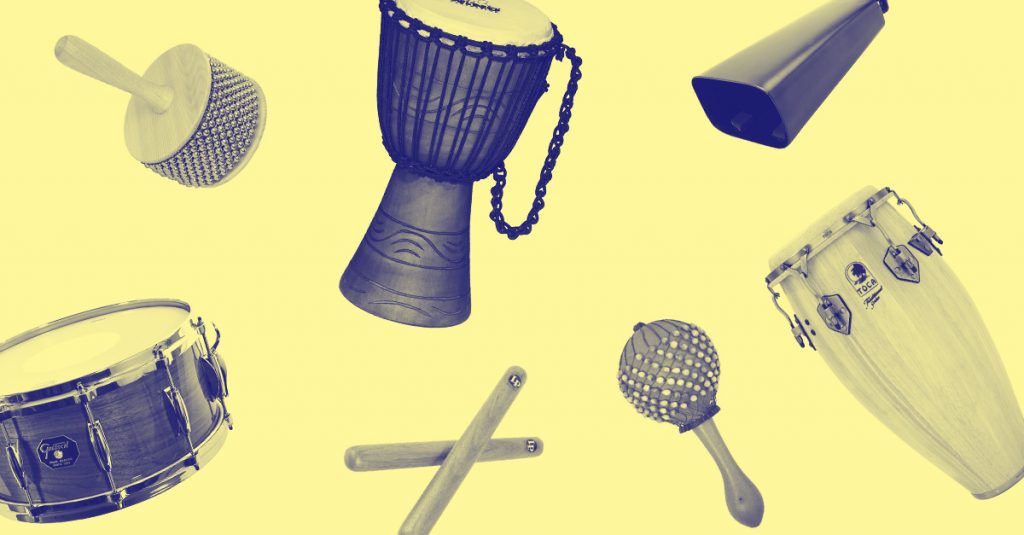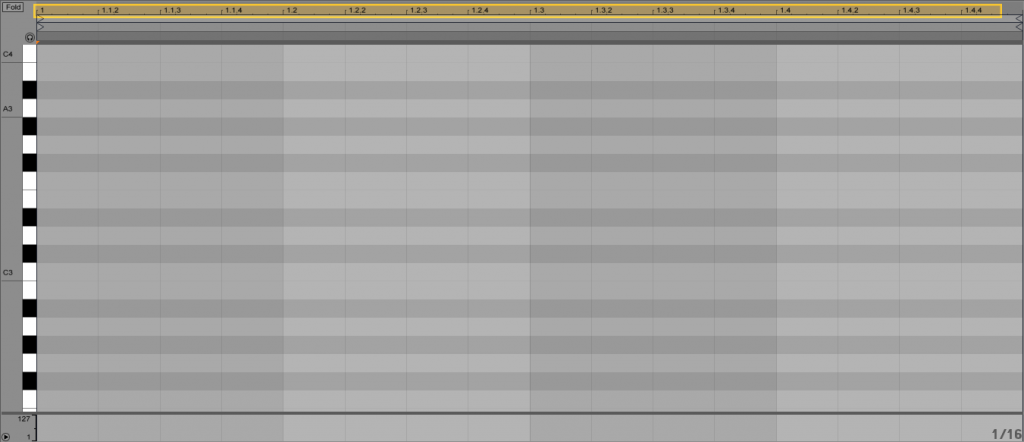+ Learn to craft more compelling beats and warped, broken rhythms with Son Lux’s Ian Chang. His innovative course is out now on Soundfly.
We’ve all felt it before: four-on-the-floor fatigue. That feeling when you’ve listened to too much music with the same square beat.
1-2-3-4, 1-2-3-4, 1-2-3-4, 1-2-3-4…
Don’t get me wrong — I’m a technohead, so 4/4 is my jam.
Lots of music is built on 4/4 rhythm for a reason: It’s familiar and easy to dance to. Sometimes you might even wonder how to write a song that’s not in 4/4! But I’m sure you’ve heard a track with that special something. That different groove that makes it stand out.
Well, my friends, that’s called a polyrhythm!
Polyrhythms will instantly make your tracks more interesting. Here’s what polyrhythms sound like and how to add them to your productions.
Poly-what?!
Polyrhythms are tough to wrap your head around at first. No worries! I’ll explain.
A Polyrhythm is more than one different rhythm happening at the same time. Together, they create a more dynamic overall rhythm.

The best place to start using polyrhythms is in your drum beat, like offsetting the rim shot and kick drum. (I’ll show you how to do it in a sec.)
But once you’re comfortable with polyrhythms, using them throughout your track — whether in your bass lines or leads — is a great way to liven up your productions.
How DAW Grids Work
The first step for writing polyrhythms in your DAW software is to change the grid value. And to do that, you have to know how the grid works! DAW grids are simple. They’re the lines where you write your MIDI notes.
Open up a session in any DAW and select a MIDI track. Open up the MIDI editor (also called piano roll or arranger depending on your DAW).

The whole numbers at the top of your MIDI editor are the bars (or measures): 1, 2, 3, 4, etc.
The beat subdivisions are for placing a note: 1.1, 1.2, 1.3, 1.4, etc.
The first number is the bar, and the second number is the beat. For example, 2.3 is the third beat in the second bar. Got it? Great!
Living Off the DAW Grid
Now let’s change the grid. These examples are in Ableton and Bitwig, but the concept is the same on most DAWs.
If you’re using Ableton Live, go anywhere on your MIDI editor and right click with your mouse.
Select “Triplet Grid.” This will divide your grid into 24 beats instead of 16.

In Bitwig, you can do the same thing by playing with the grid division at the bottom of the arranger. Change “st” to “3t.”

Splitting the grid into 24 will allow you to divide your bars by three. Now you can write polyrhythms that contain triplets: 3/2, 2/3, and 4/3 — perfect for making more interesting beats.
Make These Three Polyrhythms
You’ve set up your grid for triplets. Fantastic. Now let’s write some rocking polyrhythms!
The polyrhythms in these examples are made with the rim against the kick drum. Choose any drum kit. I picked the Kit-Core 707 in Ableton Live.
A. 3 Against 2
Put three rim shots against two kick drums in one bar. Here’s what it should look like:

Here’s what it sounds like when we play four bars of it:
B. 2 Against 3
Now switch it around. Put two rim shots against three kicks. Here’s what it should look like:

Here’s what it sounds like when it’s looped to four bars:
C. 4 Against 3
Now try putting four rim shots against three kicks in one bar. Here’s what it should look like:

Here’s what it should sound like looped to four bars:
You’ll notice three things in all the examples:
- The bottom number is your primary pulse, your main beat. So if you’re using a 2/3 beat, the three is your pulse.
- When the beat pattern starts again (every new bar), it’s the only place. The rim and kick hit at the same time.
- Each set of elements is equally spaced.
Train Your Ears With Examples
Polyrhythms are quite complex. So let’s keep it simple and do some active listening instead of too much math.
Training your ears for polyrhythms will get you there faster than getting caught up in theory.
Polyrhythms are nothing new. In fact, they’re quite an old artform. Non-Western music is filled with beautiful polyrhythms.
For example, Nigerian singer and bandleader Fela Kuti used West African polyrhythms a lot.
Listen to the congas. Then listen to the maracas and the other auxiliary percussion. Now listen to the guitar. And then the synth. What do you notice? For one instrument, you can count 1-2-3 until the pattern repeats. For another, you can 1-2-3-4 until the pattern starts again. And it still makes sense all together.
Prog rock and heavy metal use lots of polyrhythms too. Listen to how different instruments sound against each other in this Animals as Leaders song.
And guess what? There are polyrhythmic patterns in techno, too!
Listen for the polyrhythms (synth “bloops” and hi-hats) in this Donato Dozzy track.
Surprise Your Listeners
Everyone knows the 4/4 beat. At least in most Western music. Way less music uses polyrhythms. So try them in your productions and stand out from the crowd. Open up your ears and tracks to polyrhythms.
First: You’ll sharpen your active-listening skills and expand your music theory knowledge.
Second: Putting them in your tracks will make your productions waaaay more interesting — both to make and listen to.
Music is as much about expected patterns as it is about surprising your listeners, so make your rhythms poly, and never look back.
Keep on Grooving…
Continue your learning with hundreds of lessons on songwriting, mixing, recording and production, composing, beat making, and more on Soundfly, with artist-led courses by Kimbra, Com Truise, Jlin, Kiefer, RJD2, and our new The Pocket Queen: Moving at Your Own Tempo.
—
Leticia Trandafir is a DJ and music maker with a love for 303 basslines. Writer and Community Manager at LANDR.





